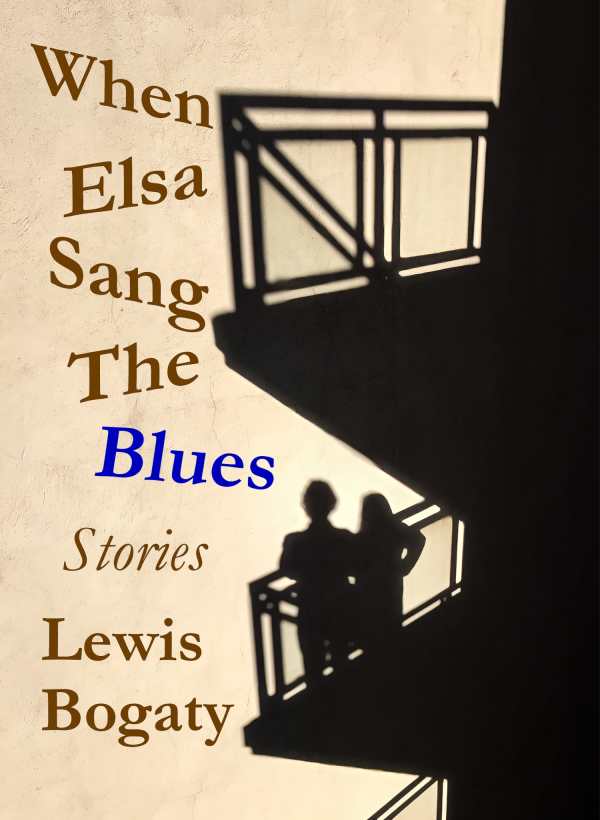When Elsa Sang the Blues
Stories
Whimsical themes and dreamy language appear in the short stories of When Elsa Sang the Blues, which is most about men’s considerations of love.
Lewis Bogaty’s short story collection When Elsa Sang the Blues focuses on intimate relationships amid the bustle of city life, using the motifs of raw, old-world love ballads and recurring erotic imagery.
Themes of connection, loss, pining, and alienation permeate the collection, which explores the resonant nature of intense emotions and the mysteries of personal connections between lovers, friends, family, and colleagues. “In Saint-Rémy and Auvers” is subversive; narrated by an unnamed woman, it is punchy and full of compressed interiority. Dripping in an aesthete’s brand of ennui, the story embraces the idea of the feminine mystique. Its language is dreamy:
We leave Saint- Rémy and enter Auvers. We hit a big crowd of people who are in a celebratory mood. They bother me. Laughter; chatter. Two men bump me talking about Chinese food they are dying for, Buddhist’s Delight, Lemon Chicken, Sesame Noodles.
And in the dense story “Talya, and Dolly’s Comb,” multiple points of view weave together. The tale takes a concise look at Turco-Mongol relations through the bright eyes of a girl. The story is as captivating as it is jarring: Its slow-burn considerations of ethnicity and generational bonds make it both whimsical and at odds with the bulk of the book.
Indeed, star-crossed lovers and men’s perspectives dominate these stories, and much of the dramatic tension hinges on romantic tropes. Several stories flirt with the memetic power of love songs as their central characters’ existential frustrations deepen after falling for colorful women, but the heroes of such tales too closely mirror one another despite their superficial differences. The lovelorn malaise they experience is often the result of fetishized views of women as ever-moving targets with erratic and inexplicable sensibilities in love. There are ladder-climbing lawyers among such stereotypical leads, and New York City is the book’s most prominent setting.
Even as several stories fall under one thematic umbrella, others pluck established characters from past stories and mix them into new tales without sufficient context or support. Indeed, the book’s progression is far from fluid. Even “When Elsa Sang the Blues,” which plays with the symbolic weight of Elsa’s performances and their reflections of bittersweet love, appears in a haphazard spot, eschewing the opportunity to highlight some of its—and the book’s—de facto themes.
The short story collection When Elsa Sang the Blues ruminates on complex personal relations with flair.
Reviewed by
Xenia Dunford
Disclosure: This article is not an endorsement, but a review. The publisher of this book provided free copies of the book and paid a small fee to have their book reviewed by a professional reviewer. Foreword Reviews and Clarion Reviews make no guarantee that the publisher will receive a positive review. Foreword Magazine, Inc. is disclosing this in accordance with the Federal Trade Commission’s 16 CFR, Part 255.

